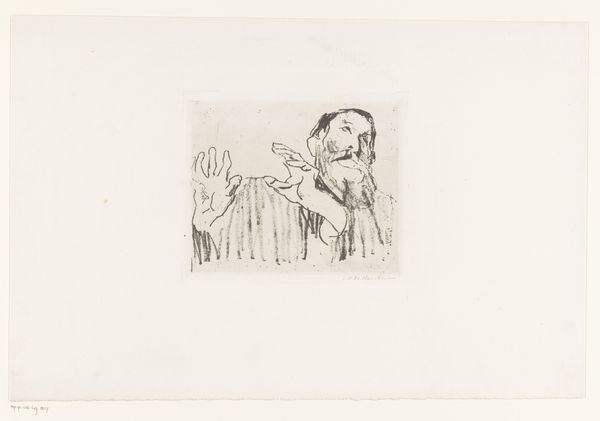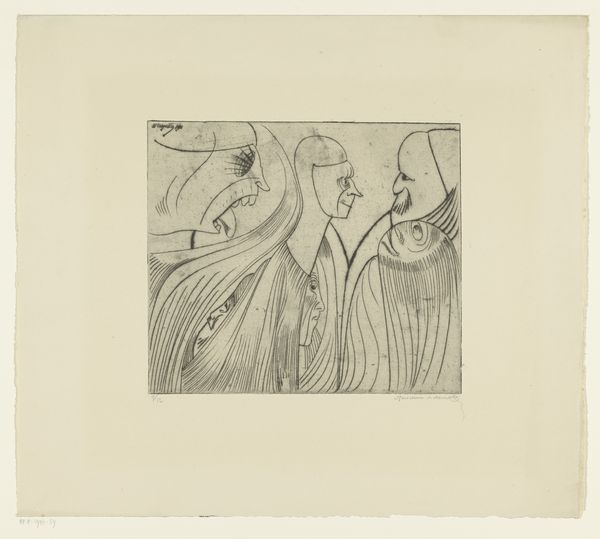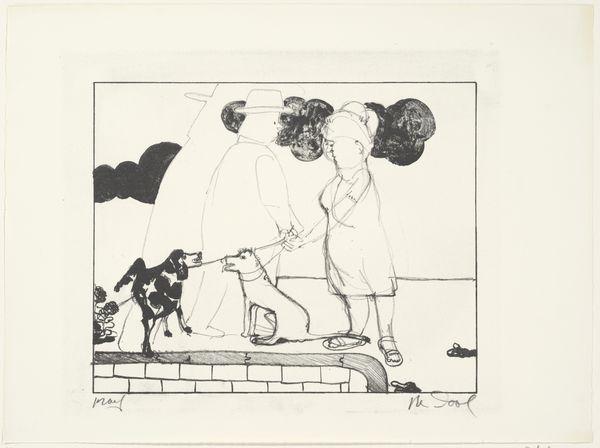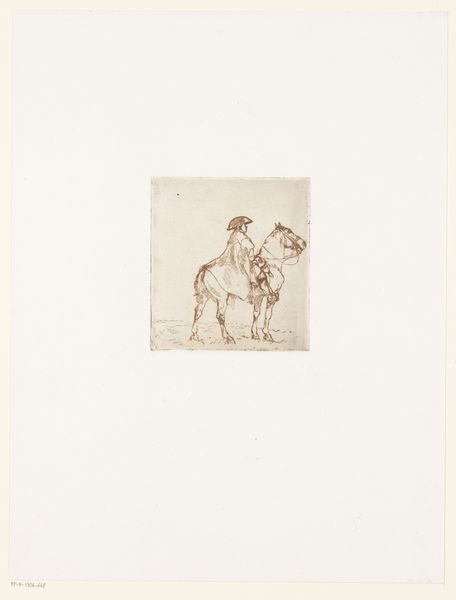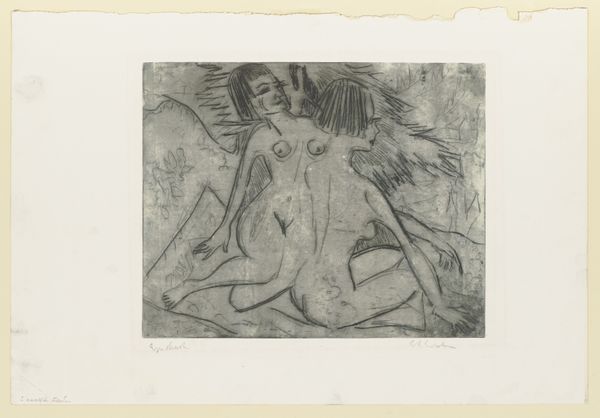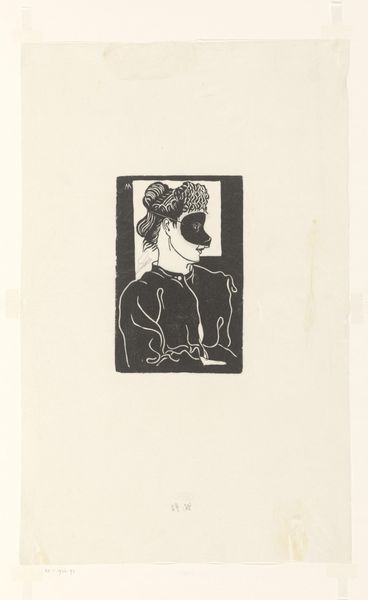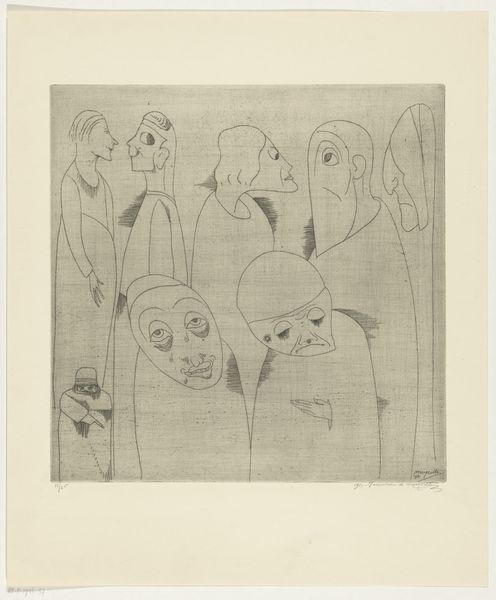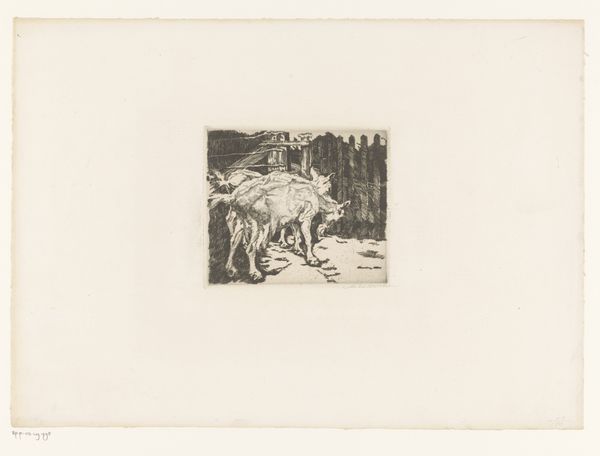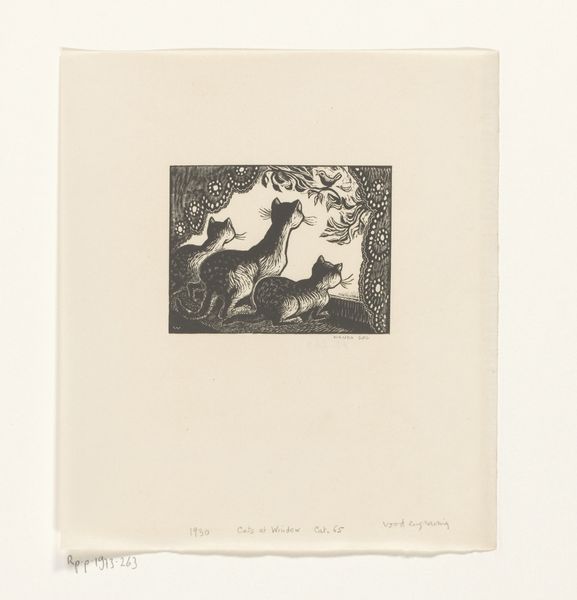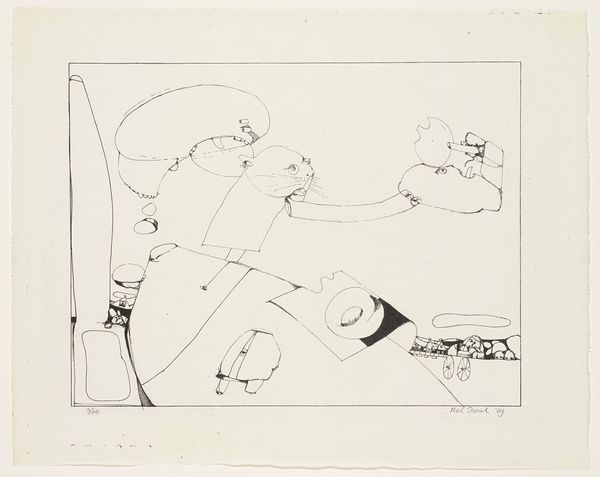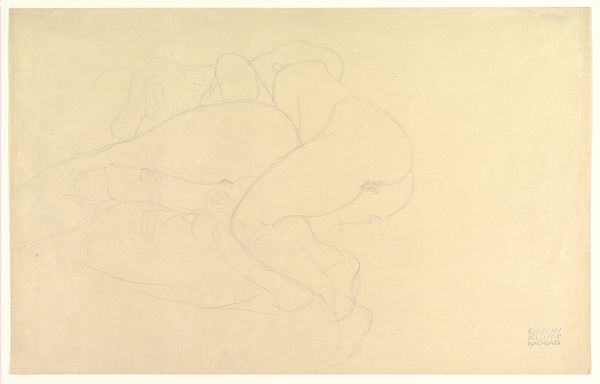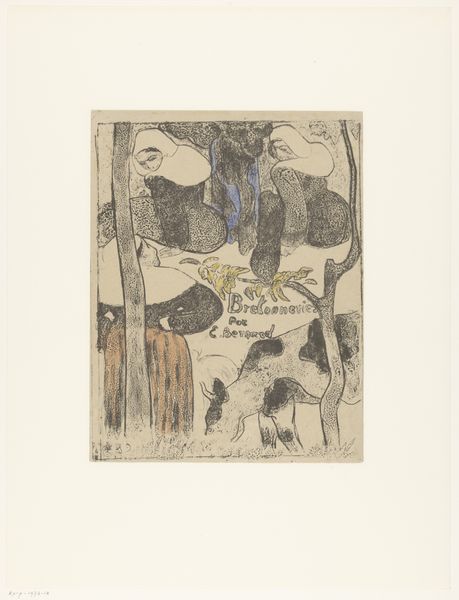
Dimensions: height 181 mm, width 218 mm
Copyright: Rijks Museum: Open Domain
Editor: This is “Groep karikaturale figuren,” a pen drawing from 1937 by Samuel Jessurun de Mesquita. The figures have such exaggerated features; what is your read on this work? Curator: De Mesquita was working in a very particular moment, wasn’t he? The rise of fascism across Europe casts a long shadow. Consider the visual language here. The exaggeration, the distortion of the human form— it's reminiscent of Expressionism, but tinged with a certain darkness, don't you think? How might that artistic choice reflect the social and political unease of the late 1930s? Editor: So, you're seeing this almost as a commentary? Perhaps these exaggerated figures are a way to depict societal anxieties, or maybe critique certain political figures? Curator: Precisely. Look at the context: De Mesquita, as a Sephardic Jew in Europe, was increasingly vulnerable at this time. I think this piece resonates with social commentary and critique, offering the viewer insight into the psychological effects of this historical context on both the artist and wider European society. It is a kind of silent scream on paper. Does the style itself contribute to a feeling about the work’s intention? Editor: It definitely adds to the intensity. The raw, almost frantic lines amplify that sense of anxiety. Before his tragic death, what kind of statement was he perhaps attempting to create through the public role of art and its politics of imagery? Curator: It’s a testament to the power of art as resistance. Despite the very real threats to his life and community, De Mesquita continued to create, and in doing so, challenged the very ideologies that endangered him. It invites us to question power structures and the forces that shape public perception. Editor: I see. That definitely changes how I view the piece. It feels less like a simple caricature now and more like a powerful statement against oppression. Thanks for shedding some light on the historical and political context! Curator: It highlights the responsibility of cultural institutions to contextualize difficult art, helping the public better engage with and understand how artists can reflect—and sometimes resist—their times.
Comments
No comments
Be the first to comment and join the conversation on the ultimate creative platform.
